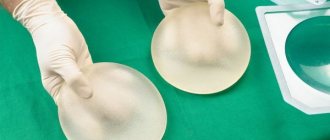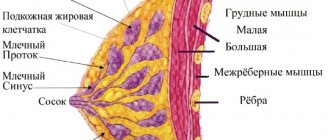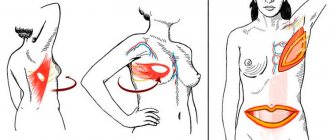Penile prosthesis is an operation that involves installing an implant in the area of the cavernous bodies of the penis. It will help a man regain his sexual activity if conservative treatment of erectile dysfunction is ineffective. The procedure is indicated for congenital and acquired pathologies. Clinic of Operative Urology named after. Sechenova treats sexual dysfunction using a minimally invasive operation called penile prosthesis; The price can be clarified at a doctor's appointment. Surgical treatment is available to patients of any age. Qualified doctors will help you cope with erectile dysfunction and restore the opportunity to have a full sex life.
Indications for penile prosthesis
Penile prosthesis is indicated for patients for whom conservative treatment of erectile dysfunction has proven ineffective. Situations like this happen quite often. Problems with potency can be observed against the background of serious cardiac, vascular, endocrine or nervous diseases, and can also be congenital. The operation to install a penile prosthesis is indicated for:
- damage to the nerve plexuses of the pelvic area;
- severe diabetic neuropathy;
- hormonal problems that cannot be solved by taking medications;
- consequences of injuries to the lumbar spinal column, pelvis, coccyx;
- cardiovascular diseases caused by the appearance of atherosclerotic plaques;
- suffered injuries to the penis associated with its deformation;
- fibrosis of the tunica albuginea of the cavernous bodies.
First of all, doctors try to solve the problem using conservative methods. If they do not produce results, surgical treatment is performed - installation of a penile prosthesis. The implant allows a man to reproduce a full erection and lead a normal sex life.
Contraindications
Surgical treatment of erectile dysfunction is contraindicated in:
- arbitrary painful erections;
- serious pathologies of the heart and vascular system;
- the presence of foci of infectious diseases;
- blood clotting disorders.
Before surgery, you should consult your doctor. He will take into account the existing contraindications and draw conclusions about the advisability of the intervention.
Indications and contraindications
Indications for restoring an erection using penile prosthesis are:
- cavernous fibrosis,
- vascular, psychogenic or endocrine erectile dysfunction that is not amenable to conservative therapy,
- impaired potency in Peyronie's disease, after operations on the prostate, bladder and rectum,
- underdevelopment of the penis,
- consequences of injuries,
- artificially formed penis,
- unsatisfactory results of previous surgical interventions.
Not everyone can install a penile prosthesis. Surgery cannot be performed if:
- bleeding disorders,
- immunodeficiency states,
- acute infectious lesions, including STIs,
- respiratory diseases,
- severe systemic diseases that cannot be corrected,
- diabetes mellitus in the stage of decompensation,
- mental disorders.
Treatment with penile prosthetics: types of implants
Surgical treatment of impotence is performed using three types of implants, which differ in design.
- Uncontrollable semi-rigid.
Such implants cannot change in size and are made of silicone. Therefore, after their installation, the penis remains permanently erect. The problem can be solved by constantly wearing shapewear. This type of phallus implantation is the most inexpensive. However, it causes a lot of difficulties for patients, so it is used quite rarely. - Controlled plastic.
Silicone is used to produce such prostheses. There is a flexible rod inside the implant, which makes it possible to fix the position of the penis. - Controlled hydraulic.
The highest quality, most expensive and complex prostheses. They are based on a design that includes cylinders, pumps and tubes. Such a prosthesis can almost completely replicate a natural erection. Advanced implant models are designed for a long service life (from 20 years), are extremely practical and convenient for patients.
The choice of the type of penile prosthesis depends on the patient’s capabilities.
How is a three-component penile prosthesis activated and deactivated?
- First you need to identify the pump in the scrotum, this is not difficult because... it is ribbed (Fig. 1).
- To activate the penile prosthesis, it is necessary to squeeze the pump several times (6-8 times)
in the transverse direction with the index and thumb (Fig. 2). In this case, the liquid in the reservoir gradually moves into the cylinders, increasing their size and thereby causing an erection. - The degree of rigidity of the cylinders and the duration of erection are determined independently by the user (Fig. 3)
-
, press the pump pads once with your thumb and forefinger - In this case, the liquid spontaneously flows in 60-80 seconds. will move from the cylinders to the tank (Fig. 5)
Attention! The pump pads must be pressed once!
Rapid decontamination of a three-component endophalloprosthesis:
With one hand, press the pump pads once, and with the other hand, squeeze the penis with a grasping motion. This will move the liquid into the reservoir faster.
Preparing for surgery
At the Clinic of Operative Urology named after.
Sechenov patients undergo thorough preoperative preparation to eliminate possible contraindications and minimize the risk of complications after the intervention. Preparation includes: laboratory tests - general and biochemical blood tests, general urinalysis, tests for Rh factor and blood group, hospital complex (HIV, syphilis, hepatitis B and C); instrumental studies - electrocardiogram, chest x-ray, ultrasound of the scrotum, penis and pelvic organs; consultations with doctors - therapist, anesthesiologist, psychologist and other specialists.
A complete list of studies and tests will be prescribed by your attending physician. At the appointment, you must inform about all existing allergies and medications taken. Penile prosthetics using the implantation method is performed in the groin area. Therefore, before the intervention, it is necessary to remove hair.
Premedication is also performed, i.e. the patient is prescribed antibiotics. They will help avoid the development of infections in the postoperative period.
Types, advantages and features of implantation of prostheses
To successfully restore erection in men, modern andrology uses several types of prostheses.
- Rigid - paired silicone rods without plastic memory, unable to change rigidity. When using them, the penis is constantly in an excited state, which causes discomfort to the man. Recently they have been used extremely rarely.
- Plastic - implants that can give the penis any comfortable position. Thanks to the metal rod they have plastic memory.
- Inflatables are the most advanced designs, naturally simulating an erection and a state of rest due to variable fluid. They reduce the likelihood of bedsores forming, restore erectile function in full, and are comfortable to use.
Penile prosthesis is performed under general anesthesia. The average duration of the operation is 1.5-2 hours. Doctors use special incision techniques and suture material to speed up tissue regeneration. In the postoperative period, antibiotics are indicated to prevent complications.
The cost of surgical restoration of erection using penile prosthesis is determined individually. The doctor will name the exact price based on the results of the examination.
Procedure for performing the intervention
At the Clinic of Operating Urology named after. Sechenov, implantation of a penile prosthesis is carried out in a minimally invasive way. Therefore, the operation is usually performed under spinal anesthesia. In some cases, general anesthesia is used. The surgeon makes a 2-3 cm long incision through which he creates a tunnel and a bed for implantation. The specialist then places the prosthesis inside. The implant is installed with minimal tissue trauma. This significantly reduces the risk of bleeding and speeds up recovery. The duration of the operation is 1-2 hours.
Features of the operation
Penile implantation surgery is performed under general or spinal anesthesia.
A tube (catheter) is inserted through the penis into the bladder to collect urine during surgery. The surgeon makes an incision below the glans, at the base of the penis, or in the lower abdomen. The corpora cavernosa of the penis, which fill with blood during an erection, is stretched. The surgeon places the implant cylinders inside the penis. All sizes are individually tailored. In the case of installing a hydraulic 3-component system, the doctor will also implant a fluid reservoir and pump.
Penile implant surgery usually takes 45 minutes to an hour.
Rehabilitation after penile prosthesis
The use of minimally invasive methods makes it possible to reduce the time of rehabilitation and hospital stay. Usually after surgery the patient is hospitalized for 3-4 days. In some cases, a person can return to their normal lifestyle within 1-2 days.
During the rehabilitation period, the patient is prescribed:
taking antibiotics to prevent the development of infections; taking painkillers in case of discomfort at the intervention site; sexual rest for 4 weeks; avoiding heavy physical activity for a month.
After discharge from the clinic, the patient recovers as an outpatient and visits the doctor on the specified days. As a rule, swelling subsides within 3-4 weeks.
During this time, sensitivity returns to the penis. After the end of the rehabilitation period, the patient must be examined annually by an andrologist.
Method of augmentation penile endoprosthetics using shell silicone implants
Adamyan R.T.1,2, Gulyaev I.V.2, Istranov A.L.2
1Moscow State University named after. M.V. Lomonosov, Moscow Scientific and Educational Center, Moscow
2 First Moscow State Medical University named after. I.M. Sechenova, Research Department of Plastic Surgery Research Center, Moscow 119192, Lomonosovsky Prospekt, 27, building 10, tel. Email, [email protected]
Today, most existing methods of thickening the penis are in one way or another based on increasing its volume with one’s own tissues - skin-fat, fascial or muscle flaps. The range of flaps used is quite wide: from rotated flaps of the anterolateral abdomen (the so-called inguinal flaps) to complex microsurgical transplantations of free skin or fascial autografts [1, 2].
All these techniques are technically difficult to use, and in the postoperative period the patient faces weeks and sometimes months of rehabilitation. In addition, these operations are quite traumatic: after harvesting the flaps, noticeable scars remain, which cannot always be hidden under clothing. Regarding the results of the operation, it is not always possible to predict what the final thickness of the penis will be, since the tissues used to thicken it may decrease significantly in volume in the first 6 months after surgery. Also, as a result of unpredictable scarring processes, contraction (reduction in size) of the penis is possible, which can lead to a decrease in its length and curvature [3, 4].
As for injection methods of thickening the penis with various biodegradable fillers (primarily preparations based on hyaluronic acid), which are still actively practiced in aesthetic surgery of the penis, these methods are easy to use and relatively safe. However, in most cases, despite immediate good cosmetic results, the long-term effect of such procedures is short-lived.
Also, in our practice, we still meet patients who have undergone the introduction of non-absorbable fillers (PAAG, petroleum jelly, etc.) into the tissue of the penis for the purpose of augmentation. The administration of such drugs poses a direct threat to the health of patients, since their behavior in tissues is unpredictable. Non-shell filler can easily migrate to neighboring anatomical areas, and infection of such a foreign substance can cause catastrophic consequences, including phlegmon of the penile tissue and its complete loss [5].
Of particular interest is the technique of augmentation of the penis using one’s own (autologous) fat. The fat autograft is quite easy to take and is also easy to model when inserted into the tissue of the penis. However, such an autograft may not take root completely; part of it may become fibrotic, causing deformation of the penis.
All these facts, including the lack of a safe and predictable method for thickening the penis, led us to the search for the “ideal endoprosthesis.” Based on many years of experience in using silicone endoprostheses for breast augmentation, we came to the conclusion that such an endoprosthesis should be synthetic so as not to expose the patient to a flap harvest, should have filler properties (elasticity, softness), but should be enclosed in a shell. Also, an indispensable condition must be stable fixation of the endoprosthesis in the tissues.
In the literature, we have often seen references to attempts to implant various solid implants under the skin of the penis: silicone plates, meshes, etc. However, most of these attempts ended in the migration of such an implant, sometimes with subsequent infection [6, 7]. The main reason for the dislocation of implants in such cases can be considered to be their placement under the skin of the penis, while for stable fixation it is necessary to place them under a more rigid fascial structure. For the penis, such a structure is Buck's fascia (Fig. 1), consisting of deep and superficial layers. Buck's fascia, starting from the coronoid groove, covers the corpora cavernosa and urethra and proximally continues into the suspensory ligament of the penis and is attached to the iliac bones of the pelvis [4].
Rice. 1. Layered anatomy of the penis
For the purpose of penis augmentation, we have developed a special silicone implant. The implant is a cohesive gel enclosed in a silicone shell (Fig. 2, 3). The size we have chosen for penile augmentation is from 6 to 12 cm in length and 2 cm in thickness at the widest part.
Rice. 2. Example of an implant
Rice. 3. Operation scheme
The main conditions for a successful operation are the formation of an adequate subfascial pocket for the endoprosthesis and the use of specially designed instruments for its installation. The operation is performed under spinal or general anesthesia. On the lateral surface of the penis in the area of the coronary sulcus, we make an incision up to 2.5-3 cm long (Fig. 4). This operation can also be combined with circumcision, using a circular incision to place endoprostheses. We expose the distal attachment of Buck's fascia to the coronal sulcus. Bluntly, on the lateral surfaces of the penis under Buck's fascia, we form parallel isolated channels to the root of the penis, in accordance with the selected length of the implants (Fig. 5).
Rice. 4. Incision on the coronal sulcus
Fig.5. Formation of a bed for an endoprosthesis under Buck's fascia
Next, we place the endoprostheses in the resulting spaces and suturing the wounds layer by layer (Fig. 6).
Fig.6. Placement of the endoprosthesis
If necessary, to eliminate possible dislocation, endoprostheses can be fixed to the tunica albuginea of the penis, for which a special retainer is provided on the surface of the endoprosthesis. The operation ends with moderate compression bandaging of the penis to prevent postoperative bleeding and implant dislocation.
The inpatient period after surgery does not exceed 1 day. The main limitation is sexual rest for 1.5-2 months after surgery. As a result of the operation, an increase in the thickness of the penis up to 50-70% is achieved.
Clinical observation: Patient G., 39 years old. In 2010, the patient underwent thickening of the penis using rotated de-epidermalized dermal fat autografts from the area of the inguinal folds (groin flaps). 1-1.5 years after the operation, the patient noted curvature of the penis, as well as a decrease in the initial volume of the rotated autografts, as a result of which he considered the resulting thickness of the penis unsatisfactory. He applied again in 2013 for the purpose of correcting penile curvature and thickening.
Objectively: The circumference of the penis at rest at the root is up to 12 cm (diameter up to 3.8 cm), in the area of the coronary sulcus the circumference is 10 cm (diameter up to 3.1 cm). In the erect state, the length of the penis is up to 15 cm; there is a moderate deviation of the penis to the right due to contraction of previously rotated inguinal flaps. The circumference of the penis at the root is up to 14 cm (diameter up to 5 cm), in the area of the body of the penis and at the coronary sulcus the circumference is up to 12.5 cm (diameter up to 4 cm). Due to the deformation of the penis and unsatisfactory results for the patient, augmentation phalloprosthesis with two silicone endoprostheses with a volume of 12.5 ml was proposed.
Fig.7. Patient G., 39 years old, before and 1 month after surgery
The patient is completely satisfied with the results of the operation. A year after the operation, he notes an improvement in the quality of his intimate life.
To date, we have performed 15 penile augmentation operations using the described technique. 13 patients were completely satisfied with the results of the operation. In 2 cases, endoprostheses were removed, one of them due to infection, the second at the request of the patient.
Thus:
- The method of augmentation endoprosthetics is the most effective, absolutely safe and convenient way to enlarge the penis.
- The method has no specific contraindications.
- The operation does not require special preparation. Hospital stay – up to 1 day.
- The operation does not affect erectile and reproductive functions.
- Thickening of the penis up to 50-70% is achieved.
- The rehabilitation period takes up to 2-3 weeks.
- Sexual activity is possible 1.5-2 months after surgery.
- Removal of an endoprosthesis for medical reasons or at the request of the patient is a simple procedure that can be performed under local anesthesia and does not entail adverse consequences.
Literature
1. Molokov, Yu.M. Surgical treatment of small penis syndrome and its prevention during reconstructive operations./Yu.M.Molokov// Abstract of the dissertation for the scientific degree of Candidate of Medical Sciences. - Tyumen. 2006.
2. Shcheplev, P.A. Small penis. Methods of correction./ P.A. Shcheplev, D.G. Kurbatov.// M.: LLC Publishing House “ROSMEN-PRESS”, 2002, 192 p.
3. Karibekov T.S. Microsurgical autotransplantation of tissues in the treatment of diseases and consequences of injuries of the urogenital area./ T.S. Karibekov.//Abstract of the dissertation for the degree of Doctor of Medical Sciences, Moscow, 2006.
4. Mikhailov, A.G. Experience in surgical enlargement of the penis. /A.G.Mikhailov, A.V.Lebedinets.// Andrology and genital surgery, 2007, No. 3, p. 18-20.
5. Adamyan, R.T. Elimination of problematic situations in plastic surgery of the urogenital area after TDL phalloplasty using inguinal rotated flaps. / R. T. Adamyan, A. L. Istranov, E. E. Vasilyeva, N. D. Kuchba.// Experimental and clinical urology. – 2012. No. 4. p.44-47.
6. Carson, CC Initial success with AMS 700 series inflatable penile prosthesis with Inhibizone antibiotic surface treatment: a retrospective review of revision cases incidence and comparative results versus non-treated devices. / CC Carson //J. Urol. – 2004. – Vol.171. – p. S894.
7. Lash, H. Silicone implant for impotence. /H.Lash // J. Urol. – 1968. – Vol.100. – p.709.
8. Kurbatov, D.G. Endoscopic penis enlargement. /D.G.Kurbatov. // Andrology and genital surgery. – 2002. – No. 2. pp. 76-78.
9. Lyulko, A. Fundamentals of surgical andrology/A. Lyulko, N. Minkov, D. Tsvetkov. // Kiev. – 1993. – pp. 76-162.
10. Bernal, R. M. Contemporary Patient Satisfaction Rates for Three-Piece Inflatable Penile Prostheses. /RMBernal, GDHenry// Advances in Urology. 2012. Vol.2012. Article ID 707321. 5 p. doi:10.1155/2012/707321.
11. Subrini, L. Flexible penile implants in the restoration of erectile function. / L. Subrini //Ann. Urol. (Paris) – 1993. – Vol.27. – p.183-191.
The article was published in the journal “Bulletin of Urology” No. 3 2016, pp. 61-70
Magazine
Bulletin of Urology No. 3 2016
Comments
To post comments you must log in or register
Penile prosthetics at the Clinic of Operative Urology named after. Sechenov
Penile prosthesis is the most common, safe and effective method of surgical treatment of erectile dysfunction. Installation of a penile implant provides a 100% guarantee of solving the problem of impotence. Entrust the restoration of male power to real professionals - doctors of the Clinic of Operative Urology named after. Sechenov. Our advantages:
- use of modern minimally invasive techniques;
- highly qualified and vast experience of doctors;
- use of advanced equipment;
- selection of implants depending on the patient’s wishes;
- full diagnostics and thorough preoperative preparation;
- comfortable rooms and attentive junior medical staff;
- use of safe hypoallergenic prostheses.
Professional penile prosthetics: registration in Moscow
If you want to forget about problems with potency and install a penile implant, sign up for a consultation at the Clinic of Operative Urology named after. Sechenov by phone or through the feedback form.
Possible complications
Complications after penile prosthesis surgery are rare but still possible. Some complications are more likely to occur immediately after surgery, such as:
- Scrotal hematoma. This is swelling and bruising of the scrotum, lower abdomen (belly), and inner thighs.
- You are at increased risk of developing a scrotal hematoma in the first few weeks after surgery.
- Your healthcare provider will give you instructions on how to prevent a scrotal hematoma. You will also be given special underwear to wear after surgery.
- You are at increased risk of developing an infection in the first 8 weeks after surgery, although this may occur up to a year after surgery.
You may also experience some problems in the months and years after surgery, including those listed below.
- The prosthesis stopped working. In such cases, it must be corrected or replaced.
- Over time, the prosthesis may wear out. In this case, you will need another operation. Your surgeon will determine whether the device can be repaired or whether it will need to be replaced.
- Your denture inflates on its own. If the prosthesis inflates automatically, tell your healthcare team.
- Other less common complications may include: erosion when the prosthesis passes through the skin; this is more likely to happen in the presence of infection, in which case the prosthesis must be removed;
- migration when the prosthesis moves; in this case, you may need another operation.
Your healthcare team will explain the risks, benefits and possible complications to you during your consultation.
to come back to the beginning
Three-component hydraulic penile prosthesis AMS 700 Ultrex
This penile prosthesis (endophalloprosthesis) consists of three components (hence the name - three-component) connected by tubes: a reservoir, 2 cylinders and a pump. The reservoir is implanted under the abdominal muscles and filled with sterile saline solution. The cylinders are implanted into the corpora cavernosa. The pump is placed in the scrotum between the testicles.
To achieve an erection, the pump is squeezed, which pumps fluid from the reservoir into the cylinders and causes the penis to become erect.
To relax the penis, you need to squeeze the closing valve on the pump, which will empty the cylinders and fill the reservoir back.
Advantages:
- Recognized by all specialists as the “gold standard” of implant surgery for erectile dysfunction
- The patient regains erectile function, and he can cause an erection of any duration, at will, at any time, as many times as he wants, which is not achieved with any other method of treating erectile dysfunction (impotence).
- All components are located inside the body and there is no need to use any external devices (such as a vacuum pump) to cause an erection. Moreover, pumping up the prosthesis becomes part of the sexual ritual for many couples.
- It imitates erection and relaxation of the penis closest to natural, which makes it almost invisible even to a sexual partner.
- When inflated, it has a fuller and more tense state.
- Very high mechanical reliability despite the complexity of the device.
Flaws:
- To create an erection and relaxation, a certain precision of finger movements is required, which is sometimes difficult for elderly patients and patients with neurological disorders. In this situation, the help of your partner will be necessary.
- Contains a larger number of mechanical parts, which slightly increases the likelihood of prosthesis failure
- Somewhat more difficult for implantation.
- High price of penile prosthesis (endophalloprosthesis).
- As with any operation, when implanting a penile prosthesis








